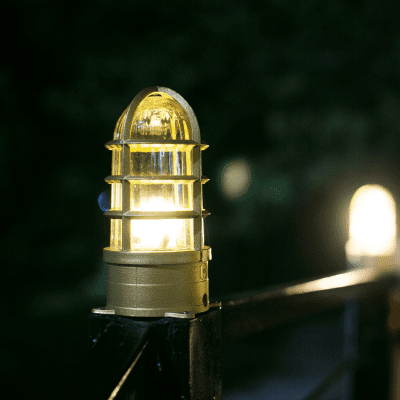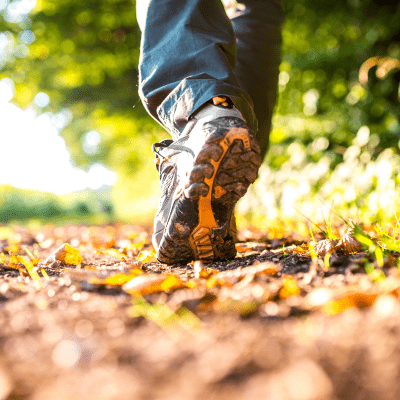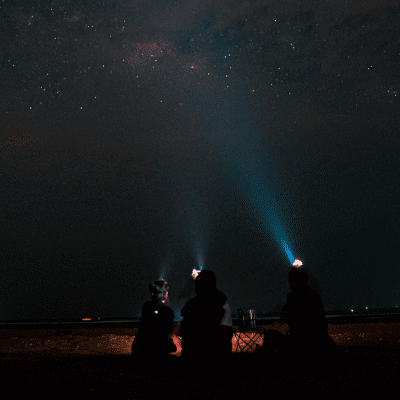Study sheds light on why we fall more in the dark: especially as we age.
When it gets dark, falls are more likely to happen. This is not a groundbreaking revelation.
However, a study around gait stability goes beyond the obvious hazard of decreased visibility to understand why this causes problems for our sensory systems, and in turn, our ability to put one foot in front of the other without incident. Not only this, but it reveals how this is age-specific, rather than other contributing factors such as multitasking.
Published in May 2023, the report “Young, but not in the dark—The influence of reduced lighting on gait stability in middle-aged adults” looked at how walking in low light, with or without doing another task, affects how people walk in middle-aged, young, and elderly adults. Participants were split into age groups of young (around 29 years old), middle-aged (around 50 years old), and elderly (around 71 years old).
People in the study walked on a treadmill under four different conditions: regular light, low light (almost dark), regular light with a thinking task, and low light with a thinking task. The study checked how much people’s steps varied and how their balance shifted forward, backward, and side to side while walking.
Here’s what they found:
Balance was compromised in the dark
When it was bright, middle-aged people walked just as steady as the younger group, and better than the elderly. But when it was dark, middle-aged people became unsteady. They didn’t walk as smoothly, and they leaned forward and backward more, and side to side more, in the low light. Young adults didn’t have these problems in the dark.
Thinking while walking didn’t make a difference
Perhaps surprisingly, doing a thinking task while walking didn’t impact anyone’s balance in any age group, whether the light was regular or low.
Our vision as we age is a possible factor
The results show that as people get into middle age, they have a harder time keeping their balance when it’s dark. This could be because they can’t see as well in low light, so their bodies have to work harder to stay balanced.
How can you take action on these findings and support your team in lower visibility?
Based on the findings of the study, health and safety managers can take specific steps to keep middle-aged workers safe and well, especially as we move deeper into autumn when daylight hours decrease. Here are some recommendations:

Enhance Workplace Lighting
Ensure that workplaces, especially walking areas and paths, are well-lit. This can help middle-aged workers navigate their environment safely, reducing the risk of trips and falls.
Installing motion-activated lighting in dimly lit or less frequently used areas provides adequate illumination when needed, saving energy while taking care of your team.

Educate Workers
Raise awareness among middle-aged workers about the potential challenges of reduced lighting conditions, particularly during the darker months. Emphasise the importance of being cautious and alert in these situations.
Walking trainers such as Joanna Hall at Walk Active offer guidance on proper walking techniques and posture which can not only improve fitness but also confidence.
Promote Physical Fitness
Encourage all workers to maintain or improve their physical fitness. Regular exercise can enhance balance, coordination, and strength, which are critical for stability and fall prevention.
Edinburgh-based Paths for All provides an online course which encourages employees to move more throughout the day for a happier and healthier workforce.

Workplace Ergonomics
Evaluate the ergonomics of workstations and walking paths to minimise obstacles, tripping hazards, or uneven surfaces.
Implement anti-slip measures, like slip-resistant flooring or mats, especially in areas prone to moisture or low light.
Flexible Work Hours
Consider offering flexible work hours or remote work options when feasible. This can help workers avoid commuting during darker hours.

Personal Protective Equipment (PPE)
Provide appropriate PPE, such as headlamps, flashlights, or reflective clothing, to workers who must perform tasks in low-light conditions.
Emergency Preparedness
Ensure that emergency exit routes are well-lit and clearly marked. Conduct drills and provide guidance on what to do in the event of a power outage or emergency during low-light conditions.
By implementing these measures and creating a culture of safety, health and safety managers can help middle-aged workers stay safe and well during the autumn and winter months when daylight is limited. These actions not only reduce the risk of workplace accidents but also contribute to overall employee well-being.
What if someone does have a fall?
With the right prevention measures and education, you can reduce the risk. But you can’t eliminate the possibility entirely.
Fall Detection is included as standard on our PG Smart app, and raises an alarm if someone falls down, sharing their location with our trained partner operators who can then send assistance, or your chosen contact, depending on whether you have a self-monitored or fully-monitored lone worker solution.
Book a demo or get in touch with our team today to find out more.
